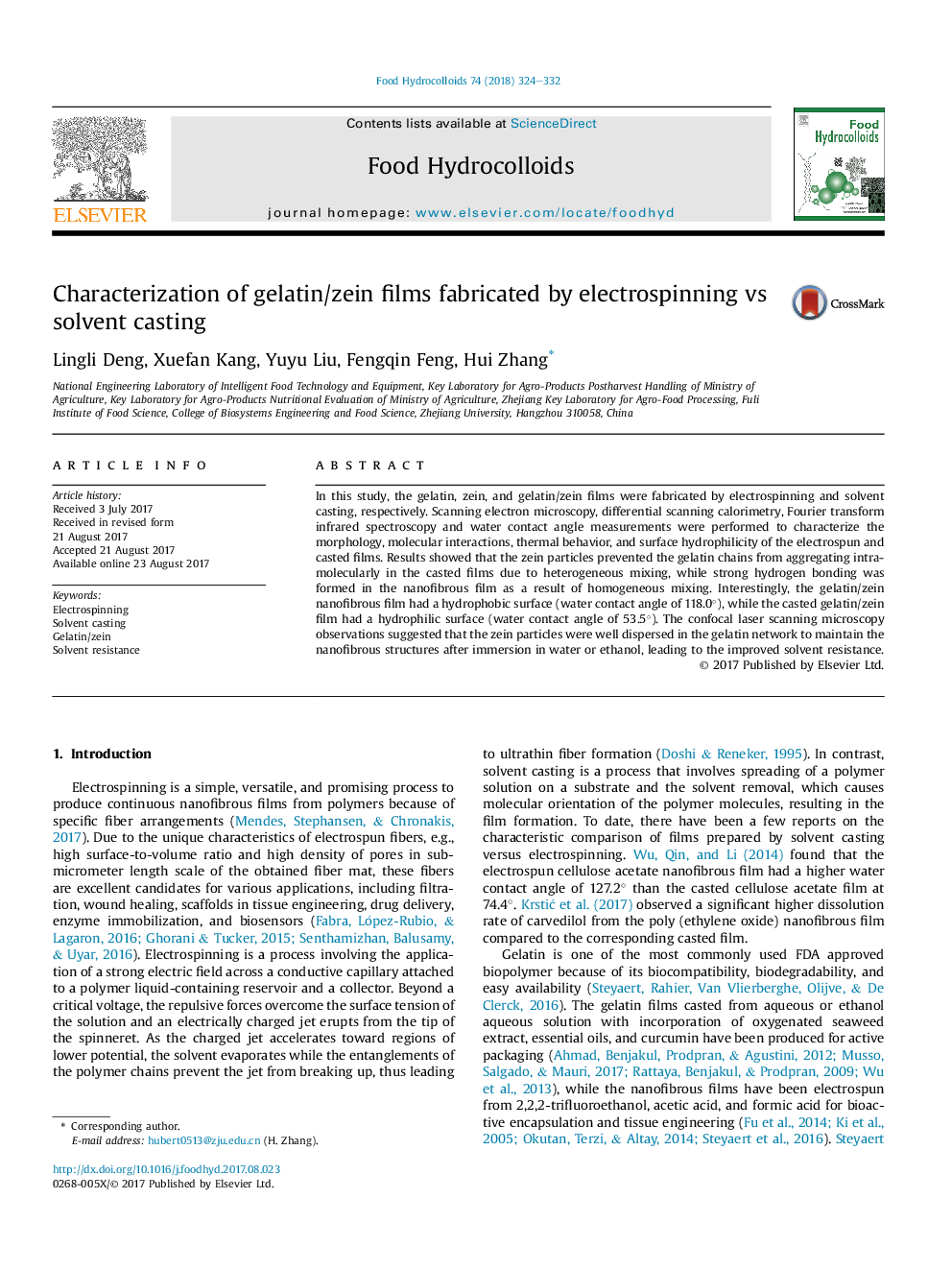| Article ID | Journal | Published Year | Pages | File Type |
|---|---|---|---|---|
| 4983754 | Food Hydrocolloids | 2018 | 9 Pages |
â¢Gelatin/zein films were fabricated by electrospinning and solvent casting.â¢Homogenous mixing in the nanofibrous film and heterogeneous mixing in the casted film were observed.â¢The nanofibrous film was hydrophobic while the casted film was hydrophilic.â¢The nanofibrous film showed water resistance while the casted film did not.
In this study, the gelatin, zein, and gelatin/zein films were fabricated by electrospinning and solvent casting, respectively. Scanning electron microscopy, differential scanning calorimetry, Fourier transform infrared spectroscopy and water contact angle measurements were performed to characterize the morphology, molecular interactions, thermal behavior, and surface hydrophilicity of the electrospun and casted films. Results showed that the zein particles prevented the gelatin chains from aggregating intra-molecularly in the casted films due to heterogeneous mixing, while strong hydrogen bonding was formed in the nanofibrous film as a result of homogeneous mixing. Interestingly, the gelatin/zein nanofibrous film had a hydrophobic surface (water contact angle of 118.0°), while the casted gelatin/zein film had a hydrophilic surface (water contact angle of 53.5°). The confocal laser scanning microscopy observations suggested that the zein particles were well dispersed in the gelatin network to maintain the nanofibrous structures after immersion in water or ethanol, leading to the improved solvent resistance.
Graphical abstractDownload high-res image (364KB)Download full-size image
